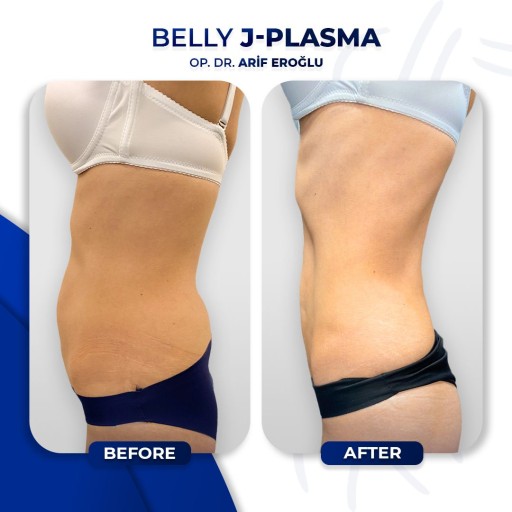Full Body Lift
3 results foundFull Body Lift: Understand and Learn
A full body lift is a body contouring surgical makeover to help one's appearance, especially for those who have lost considerable weight. This guide takes a deeper look at what a full body lift entails: the advantages, risks, surgery involved, recovery, and maintenance thereafter.
What is a Full Body Lift?
A body-lift can be described as an extensive surgical process in which excess skin and fat from the body are worked on. It would usually involve the abdomen, thighs, buttocks, arms, and, at times, the breasts. Full body lifting is quite handy for people who have lost a drastic amount of weight and, on top of it, are faced with hanging pieces of skin and tissue. The purpose of this surgery is basically to tighten and reshape one's body for a more toned, youthful look.
Why Would You Consider a Full Body Lift?
Many people resort to a full body lift due to the following reasons: Ample weight loss caused by dieting, exercising, or bariatric surgery usually makes the skin loose and sag because it doesn't tighten up to the new form of the body. A full body lift will enhance body proportions, add more to self-esteem, and improve the quality of life. Several patients have testified to feeling more comfortable in their clothes and more confident in social surroundings after the said surgery.
Advantages of Full Body Lift
The benefits of a full body lift are not confined to aesthetics alone. Some of the key benefits include:
Improved body contour: The surgery firms and reshapes the various areas for a superior, harmonious silhouette.
Improved comfort: The elimination of excess skin can result in diminished discomfort and skin irritation from folds of skin.
Increased self-esteem: Most patients have improved self-esteem and confidence in their body image following surgery.
Long-Lasting Results: With a commitment to a healthy lifestyle, results from a full body lift can be long-lasting.
Risks and Considerations
Every other surgery, a full body lift too has its set of risks. Possible complications include:
Infection - As in any other surgery, there is a risk of infection at the site of the incisions.
Scarring - Scars can be pretty significant; however, good surgeons avoid this as much as possible.
Fluid Accumulation: Seromas, or fluid collections, may form under the skin, and may need to be drained.
Anesthesia Risks: There are risks associated with general anesthesia, which must be discussed with the surgical team.
The candidate must have realistic expectations about the procedure and a full understanding of these risks prior to beginning the procedure.
Who is a Good Candidate for a Full Body Lift?
Ideal candidates for full body lift surgery are usually those who have lost quite a significant amount of weight and with that have sagging, loose skin. At a stable weight, normally at least six months, and generally in good health, candidates will be considered. Moreover, being prepared psychologically, with a willingness to live a healthy life thereafter, will be of immense benefit. A candidate must seek a complete examination by an accomplished surgeon in order to demonstrate qualification.
The Surgical Procedure
Generally, a full-body lift takes several hours and is, therefore performed under general anesthesia. Variations in the operation per the regions which may be operated upon may exist, but in general, an outline of the steps involved is given below.
Incisions: The incision will be made at strategic locations around the abdomen, back, and thighs.
Skin Removal: The excessive skin along with fat is removed and at certain places the tissues beneath may be tightened.
Suture and Closure: The incisions are sutured, followed by the insertion of drains to avoid fluid accumulation in the tissues.
The extent of the surgical procedure depends on the individual patient's requirements and expectations.
Recovery and Aftercare
The duration of recovery following a whole body lift will be several weeks. Most patients will probably have some degree of swelling and bruising with discomfort, where pain medications are prescribed. The essentials of recovery include:
Rest: Refrain from heavy lifting and other strenuous activities for many weeks. Follow-up Appointments: Follow-up visits to the surgeon are required to check on the healing process. Compression Garments: Wearing compression garments reduces any swelling and assists in the healing process. It is important that each patient follow his/her surgeon's post-operative instructions for an optimal recovery.
Long-Term Results and Maintenance
The result of the full body lift can be very dramatic and long-lasting for the patient who is truly committed to a healthy lifestyle. A balanced diet and regular exercise may help in sustaining the weight loss and further improving the results of the surgery. The patients should be advised that body contours will continue to be influenced by natural aging, but the full body lifting improves appearance and self-image for many years to come.
Conclusion
A body lift tends to be life-changing for the candidates who have gone through dramatic weight reduction. Understanding the nature of the procedure, its advantages, risks, and follow-up care will allow candidates to make intelligent choices regarding their options. Consultation with a qualified surgeon is paramount in ensuring safety and success. When properly planned and committed, full-body lift may result in much greater confidence and empowerment of oneself.



